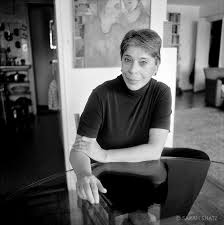Pianist Marilyn Nonken. Image via marilynnonken.com.
One of the hardest lessons for workshop students is to respond to only what is before them. What is on the page? On the screen? On the stage? On the canvas?
The lesson is important for both respondents and artists: let the work accomplish its goals under its own power, by its own means. Lengthy notes of explanation from the artist, if they are not part of the work, encroach on a respondent's ability to evaluate the work’s success. Likewise, responses to things outside of the work (the artist’s process, her level of effort, her other work) distract the artist from hearing how the work itself has been received and gauging how it might be received by those she may never meet.
One tipoff that the response looks outside of the work is the presence of moral judgment.
Compare this . . .
“I just don’t feel like you tried very hard.”
Or . . .
"I felt like the writer was trying to get me to feel sorry for her."
With this . . .
“I couldn’t figure out what the piece was really about. At first I thought it might have been the arson. Then there were five paragraphs about the brother’s troubled past, but then it returned to the arson and the investigation. So I found myself unable to grab hold of the story, because I couldn’t determine which storyline was the ultimate focus, the brother or the arson.”
Note how the gratuitous moral language in the first two responses offers nothing about the art, only speculation about the artist. The third response highlights the source of the respondent's confusion and stays within the bounds of the art.
Respondents do well to confine their attention to what the artist sets before them. And artists do well to learn to let their art speak for itself. Well-conceived work can stand on its own.
Consider, for instance, how strange and yet perfectly articulate this piece of music is. It's an excerpt from Morton Feldman’s Triadic Memories, performed by Marilyn Nonken. Feldman's composition and Nonken's interpretation require no introduction, even though a listener may be unfamiliar with this kind of music. The logic of the piece is sufficient unto itself. And understanding it does not require us to reflect upon anything outside of the piece and its performance.
Thank you for reading.


























